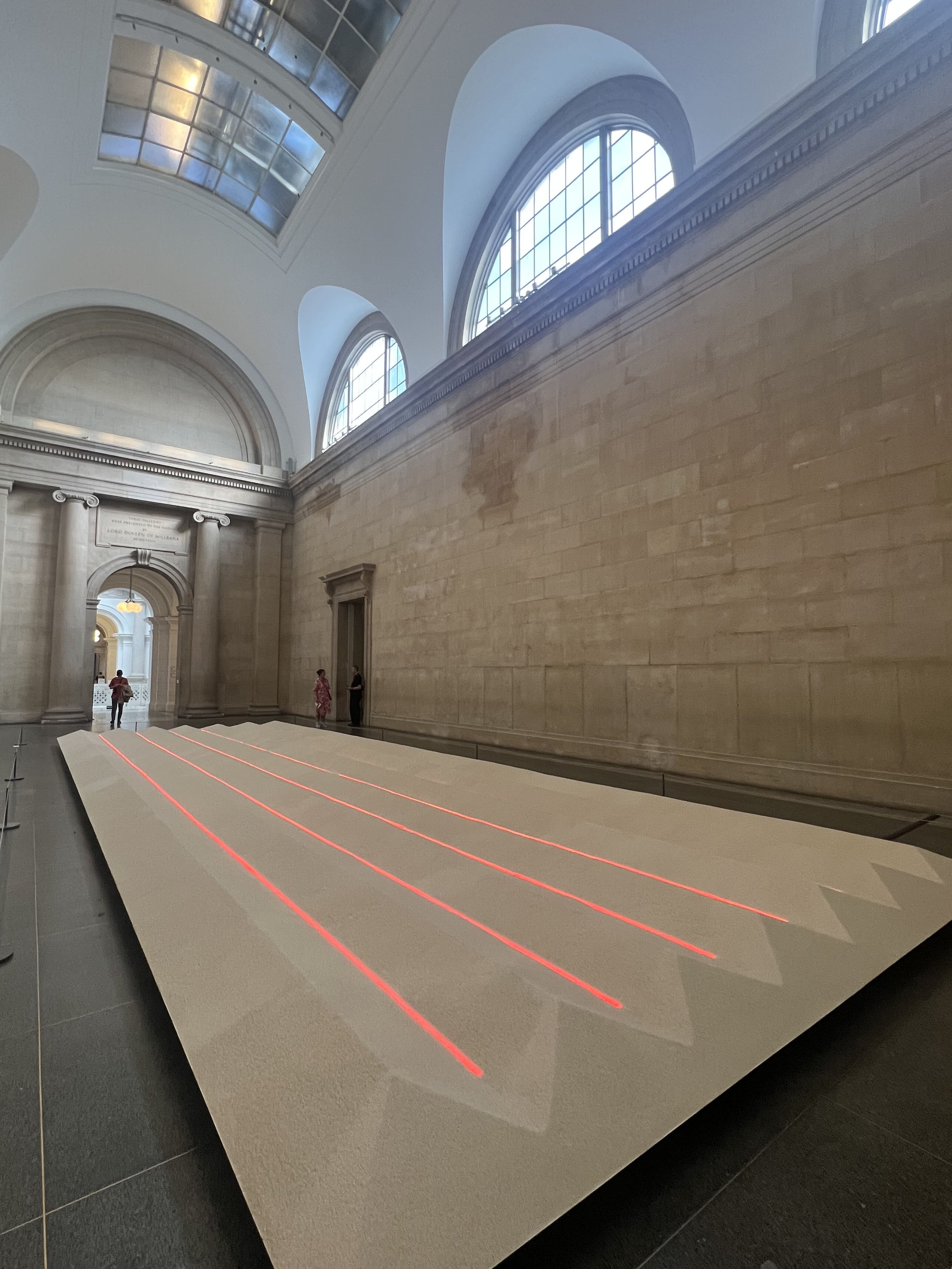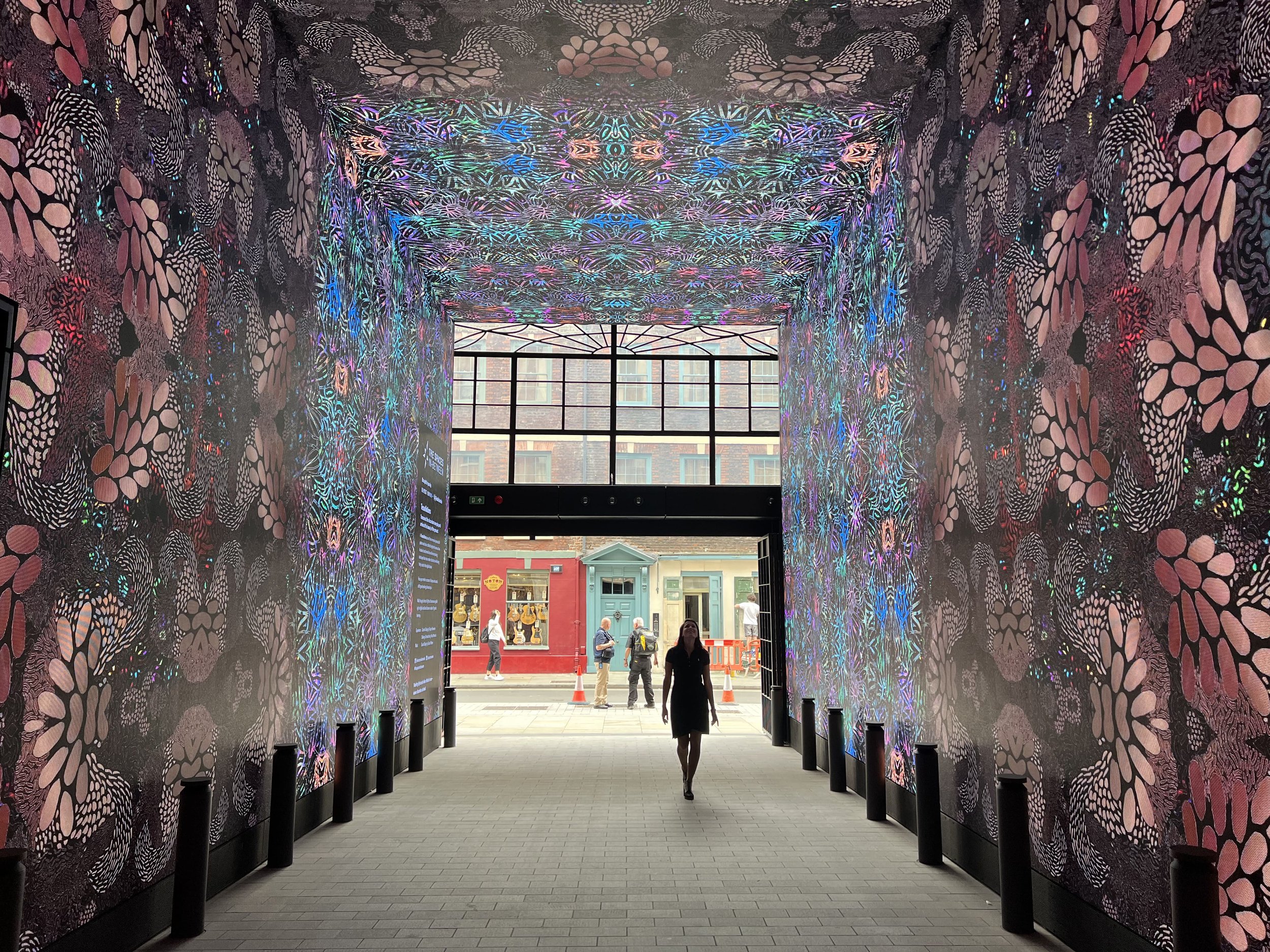London
Our marathon four-day tripWe flew into the city's most important airport, Heathrow, on a British Airways flight from Buenos Aires. A first and necessary clarification. There are three other major airports besides the convenient Heathrow: these are Gatwick, Luton and London City, all connected to Europe and the rest of the world. When choosing tickets, you should bear in mind that, depending on the location and the airlines that operate them, the prices will be more or less affordable. Always when getting off the plane you have to take a transport to where you are staying, which implies more expenses and time, that valuable time that flies when you are on a trip.
Another tip: to see the city when landing at Heathrow airport, choose the window seat on the right side of the plane.
In our case, as we were able to book well in advance we were able to get very convenient accommodation in the city centre. The Z Hotel Piccadilly offers very (very) small but complete rooms and we decided to prioritise location, perhaps the most significant thing when touring European capitals as there is so much to discover that, again, time is of the essence.
It was Sunday so we decided to visit the Camden Town market at its most bustling. Super lively, very alternative, colourful.
From there, a bus that we paid for with our credit card - contact less - took us to Primrose Hill. Another tip: in the UK everything can be paid for with credit cards, so there is no need to change currency. In fact, on our trip we didn't see a single pound, everything was banked. A marvellous thing.
Primrose Hill is a very picturesque area of London. Pure sophistication and elegance. Walking around it is an invitation to get away from the touristy and get to know the real city and the locals, with their traditions and very London habits.
The proposal is simply to get lost in its small centre of a few blocks and -perhaps, why not- take advantage of one of its bars or pubs to have a pint and take a break.
The city's neighbourhoods are very different from one another, but they all have the particularity that the main businesses are concentrated in one main street, be it the grocery store, the barbershop, the bookstore or the small market. There are a couple of blocks where you can feel the energy and then, just a few metres away, you enter residential tranquillity.
From there we took the tube to Hampstead, as well as getting to know this other attractive neighbourhood in the north of the city, we wanted to take advantage of the good weather to enjoy a great sunset on Hampstead Heath.
But before that, we took the little streets that go up and down and mingled with the locals in a neighbourhood pub, The Holly Bush, for a few beers. From there, an uber took us to one of the entrances to the park to go up to Parliament Hill Viewpoint, from where you get a panoramic view of the city. A must for locals and tourists alike.
On our way back to the city centre we passed through the fun Covent Garden Infinity Chamber, a well-lit passageway, ideal for social media snapshots. Then we tried Bunsik, a corn breaded hot dog that seemed to be all the rage as there was a queue to get into the small shop, which was pumping out these hot dogs every second. We then took some pictures of the statue of the ballerina, right in front of the Royal Opera House with the iconic telephone boxes in the background. Heading towards the bustling Covent Garden it's worth stopping on the skybridge at the Royal Ballet School and the Royal Opera House.
We finished the walk by crossing Goodwin's Ct., a historic little street in London, recognised as remarkable, making a quick visit to Chinatown.
The next day we took the uber boat from Embankment Pier to Tower Pier for £16.60 for two tickets. The journey takes about fifteen minutes, and although it is the mode of transport for many Londoners, it is a nice alternative to the tube or the characteristic red bus.
Directly opposite Tower Pier is Tower of London, Her Majesty's historic castle on the north bank of the Thames. It dates back to 1078 when William the Conqueror had the White Tower built. It served as a royal palace, fortress, prison and now houses the Crown Jewels.
From there, a short walk to St Dunstan-in-the-East, an Anglican church dating from 1100, which was severely destroyed in World War II. In its ruins a very nice public park was created.
Then a quick stroll through Leadenhall Market, a market with distinctive architecture housing cafes and restaurants before the scheduled entrance to Sky Garden. This is a free viewing platform but requires online booking well in advance. It is located on the top floor of the Fenchurch Building, known as the Walkie-Talkie for its unusual design. The view of the Tower of London, the river and the whole city is unbeatable. Fabulous. Recommendation: book for the first available hour. Nearby another viewpoint option is offered by The Garden at 120.
A walk followed to St. Paul's Cathedral, the 17th century Anglican cathedral with its gigantic dome. In its crypt are the tombs of Nelson, Wellington, Churchill and other illustrious Englishmen.
The best way to cross the river to Tate Modern is to take the Millennium footbridge, which offers panoramic views of the city skyline.
The iconic modern art gallery does not require admission tickets or prior booking. To walk through its permanent exhibition is to enter fully into the most significant paintings, sculptures and installations of modern and contemporary art. On the sixth floor is Kitchen and Bar, the glassed-in café that invites you to enjoy a good drink, with one of the best views of London, after an intense tour of the exhibition.
That long day ended - by bus - at Tate Britain, where we arrived just after closing time, but with just enough time to enjoy William Turner's exceptional paintings of maritime scenes.
The third day started very early in the morning as we wanted to attend a religious ceremony at Westminster Abbey. The appointment was at eight o'clock in the morning for the Eucharist, in the Shrine, the chapel of Edward the Confessor. Solemn, very English.
Afterwards, we strolled around the Big Ben area and Parliament. Interesting fact: you get a nice picture of this monumental complex from the other side of the river, from the Bridge Arch, under the arch next to the stairs.
We crossed the city on a red bus because at ten o'clock in the morning we had tickets booked to enter the British Museum. Although it is free, it is highly recommended to book online well in advance.
From the famous Rosetta Stone, which unravelled the Egyptian hieroglyphs, to the mausoleum of Halicarnassus; the colossal statue of Amenhotep III, from 1350 BC; Egyptian mummies; the Nereid monument, from 390 BC, in the form of a Greek temple; the marbles of the Parthenon in Athens; Assyrian relics; ancient Buddha statues, plus the complete Grenville library and even Raphael's drawings, to name but a few gems of world history on display. We finished with a break in the Norman Foster-designed Queen Elizabeth II Great Court Hall with its glazed ceiling. On the way out, a Taco Bell (@tripticity_ favourite) invited us to stop and recharge our batteries.
From there, a short walk took us to The Roof Garden, the free access viewpoint of the official post office. Quiet and peaceful, it offers a different postcard view of the city, with the Great Court of the British Museum below. And, as a bonus, spotless toilets.
From there, we head to The Now Building - Outernet London, a building open to the public that offers an impressive immersive experience.
We continued on to Neal's Yard, a historic street in the city that has been converted into a business and café centre.
We had made a reservation at The National Gallery so we hurried to get there in time. Again, although it is free, it is advisable to pre-book to avoid possible queues.
Faced with the overwhelming display of the history of painting exhibited there, we decided to enjoy the Van Gogh room, with its Sunflowers in the centre, to then start our "sweeping" practice. That's what we call walking around these immense galleries with quick views, given the shortage of time and the enormous amount of great works hung in these rooms.
The museum's café is very welcoming, so we stopped to recharge our batteries, enjoying an English cider and then set off on another express visit to The National Portrait Gallery, another of London's incredible museums.
We concluded that endless day at Fortnum & Mason, the iconic London house, with its variety of blends, cookies, chocolates and delicatessen with the British seal of distinction and elegance.
A shop worth knowing. A secret? A few minutes before 7pm, when it closes, many fresh products such as scones, breads and sandwiches are available at a 50% discount.
The agenda for our last day in London was just as full as the previous ones.
First we tried Le Deli Robuchon's cube-shaped vanilla cream-filled croissant. The hit of the moment in terms of patisserie.
It followed a bus to Harrods, the city's best-known luxury department stores', on Brompton Road in Knightsbridge. Founded in 1849, it was once owned by the father of Dodi Al-Fayed, who died in a car crash in Paris in 1997 with Lady Diana, Princess of Wales.
Luxury, big European brands, opulence, some of the characteristics of the mega department stores'.
Both the Food Court and the Christmas section are absolutely not to be missed, whatever Mr @tripticity_ may think.
On the way to the Victoria & Albert Museum we passed the London Oratory, a Catholic church in South Kensington.
The museum is extraordinary, not only for its architecture, but also for how entertaining it is to visit. Decorative art, antique pieces from all continents, religious items, even modern furniture.
The cafeteria is another must-see. Although a bit noisy, it is simply beautiful.
We made quick visits to the Natural History Museum and its neighbour the Science Museum, ideal for visiting with children. They were not of particular interest to us, but being right opposite the V&A it was worth a visit.
From there we took a bus to the Design Museum, which tells the history of design, especially graphic and advertising design. The most amazing thing, its modern building. Just behind, in the middle of Holland Park is the Kyoto Garden, a typical Japanese garden where we made another well-deserved stop among squirrels and peacocks.
At the end of the afternoon, we took a bus to Ladbroke Square Gardens to get lost in Notting Hill, the other very particular London neighbourhood and its centre on the famous Portobello Road. Although the Sunday market is the hit of the neighbourhood, the antique shops are open during the week.
And so, exhausted but happy, our trip to London came to an end, for the next day the Eurostars train awaited us, which, from St. Pancras Internationals to Gare du Nord in Paris, connects the two great European capitals in two hours.




















































































































































